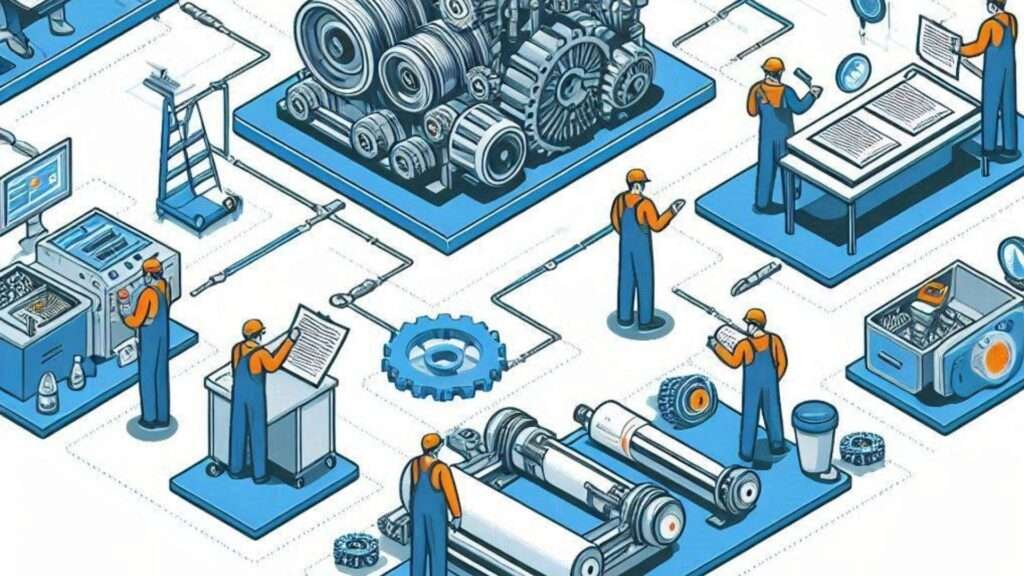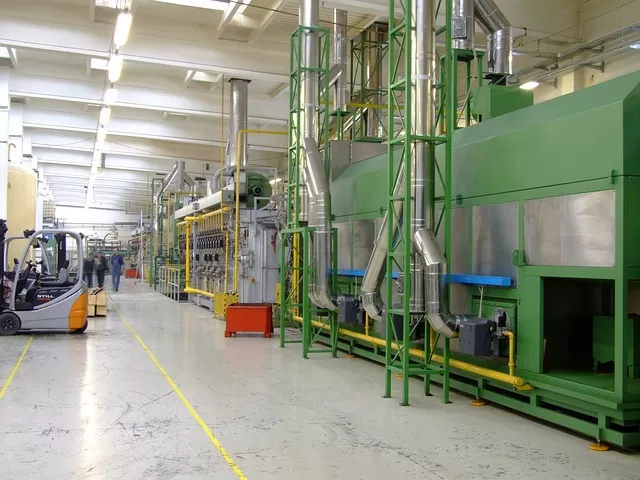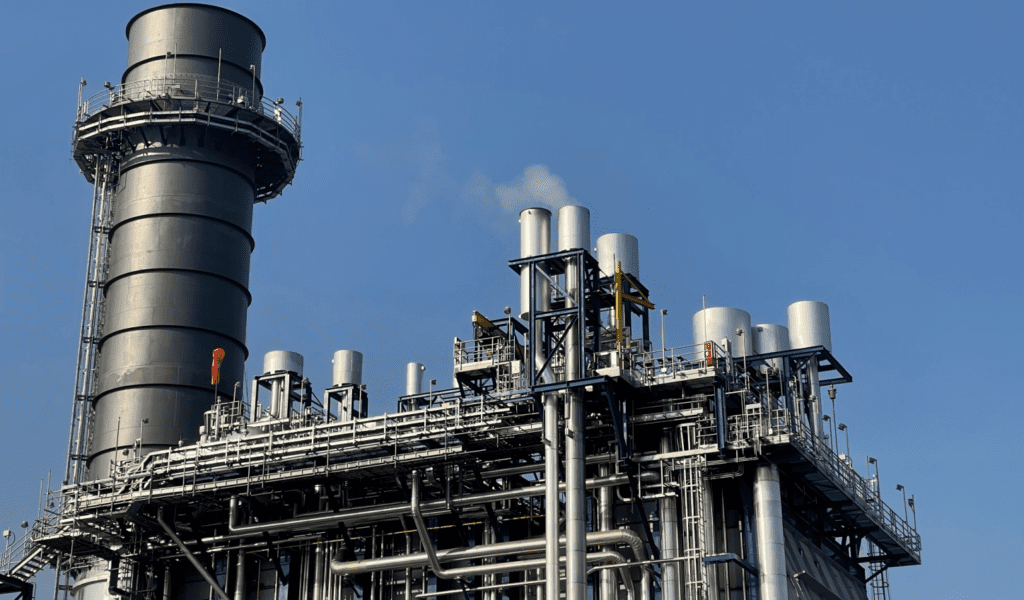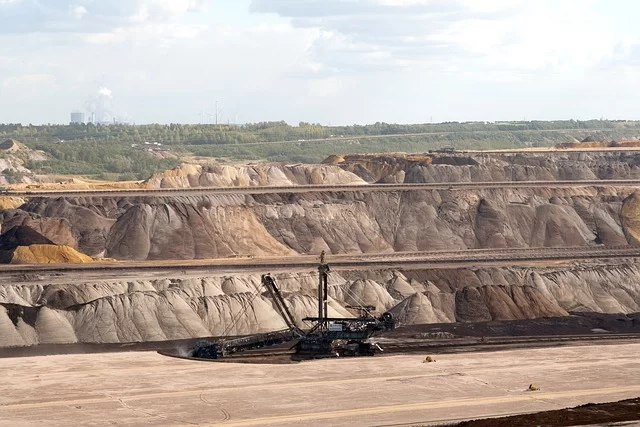What Is A Maintenance Shutdown Event?
Maintenance shutdown events are critical events when
industrial facilities plan to temporarily halt operations to conduct essential
maintenance or projects tasks that cannot be done whilst the plant is running.
These shutdowns are integral to ensuring the long-term
operational efficiency and safety of the plant. They represent a significant
investment, often consuming a substantial portion of the maintenance budget.
A lot of planning & scheduling goes into developing a
shutdown plan that will justify the lost production experienced over the
duration of the event.
Processing plants typically incorporate a combination of
single-stream and multi-stream processes:
1.
Single-stream
processes: Have no process redundancy/No alternative flow
paths
2.
Multi-stream
processes: Provide process redundancy for the operations
and maintenance teams (Example: Duty/standby arrangement). Process flow can be diverted between streams
and allows maintenance on inactive stream while plant remains operational.
Shutdown Events will typically take place for work that needs
to be done on Single Stream Processes.
The importance of maintenance shutdown events is paramount as it’s the
only time maintenance or project teams can safely perform their tasks.
There are a lot of process isolations activated/put in place
to make each planned task safe and this is called isolating all potential
sources of harm.
This could be a combination of harmful energies (fluid pressure,
gravity, temperature, electricity, gas pressure etc) and harmful products (dangerous
fluids (corrosive, caustic etc) and toxic or explosive gasses that could cause
harm, so for each individual situation a solution is planned to make each
section of the plant safe for planned work.
Leading up to the shutdowns the isolations are identified and
included into the first section of the shutdown plan which is often called the
‘Operations Rundown Plan’.
Some of the isolation points identified on the rundown plan
can be tested for integrity via non-intrusive means (test equipment) prior to
the shutdown event and others will need to be physically tested at the start of
the rundown plan, so maintenance and production teams will work together on
this part of the plan.
Some of the isolation and preparation work will be involving
neutralizing the dangerous nature of some sections of the plant; this can
involve purging, neutralizing or flushing certain work areas and then testing
to prove that no sources of potential harm still exist.
For some types of process plants, the operations rundown plan
is probably more important than the actual work itself due to the hazardous
nature of the plant.
Even though the plant may be completely turned off during a
shutdown event, no chances with people’s safety can ever be taken, so every
identified point of isolating and/or removing potentially harm is taken very
seriously and no shutdown work will take place unless all of the tasks to
ensure safety are proven to have been effective.
The Rundown Plan starts once the feed to the plant is stopped,
then any product that is remaining in the process can be ran though the plant
and handled accordingly. All isolations
can be applied in succession and all of this information will be evident on the
master isolation plan.
Once there is no product in areas where there needs to be no
product for the shutdown work to take place, permits to work can be reviewed
and approved by the permit issuing officers and then permits can be issued to
allow cleaning, work preparation and eventually the planned shutdown
maintenance or projects work tasks.
In addition to maintenance and project work, shutdowns can be
utilized for conducting specialized inspections, thickness tests, cleaning,
measurements etc that can only be done during a shutdown event and are
essential to ensuring the reliability, quality and availability of the plant
going forward.
Effective planning is paramount to the success of a
maintenance shutdown and the overall success of a Shutdown could be measured
via a few different ways. For my mind, I
think the best equation is: Zero Harm,
Zero Safety Incidents, Zero Near Misses & All Work Completed In Full, At Specification,
On Time & Within Budget.
For the majority of shutdown events, the total cost of the
maintenance and project work that is done pales in comparison to the total cost
associated with the loss of production.
There are production losses on each side of the shutdown events as the process is ramped down prior to
the event and then ramped up after the event (once the plant has been handed
back to production, de-isolated and prepared for operation).
A worthwhile shutdown can prevent unwanted & unplanned
downtime occurring during the next operational campaign period, ensuring that
production targets are met.
In essence, maintenance shutdowns are a necessary and
strategic aspect of plant management. By investing in these planned
interruptions, facilities can maintain high safety standards, optimize
equipment performance, and ultimately extend the lifespan of critical assets.
Proper preparation and execution of maintenance shutdowns not
only safeguard the plant’s operational integrity but also contribute to
sustained profitability and efficiency.
Importance
of Effective Planning and Scheduling.
Proper planning and scheduling are paramount for the success
of any maintenance shutdown.
There is a lot of intricate coordination required during these
events to ensure that all necessary tasks are completed safely, efficiently and
within the designated timeframe.
Quality shutdown planning combined with rigorous scheduling
meetings and approval processes that involve all key stakeholders minimises the risks
of any ‘surprises’ during a
shutdown.
The last thing that operations and maintenance supervisors
need during shutdown events is to learn how their teams were surprised to learn
that a particular safety precaution or job preparation task was not done as per
specification or identified on plan.
These situations of ‘surprises’ need to be addressed with some
urgency which takes valuable supervision time away from the core planned tasks
of the shutdown.
Risk assessments and task re-evaluations will need to take
place to make sure zero harm (the main goal of any event) is prioritized.
The importance of having a thorough shutdown plan cannot be
overstated.
A thorough shutdown not only involves identifying all
maintenance activities, allocating resources, and setting a realistic timeline
but also involves identifying instances of tasks that conflict with each other
or tasks that require other tasks not to be done until another one is
completed.
This could related to the use of cranes in a particular area
where the boom swing areas could potentially overlap or where one work crew may
be potentially operating above another during a certain point in time which
requires either task rescheduling or substantial drop area potential harm
mitigation (nets being setup to prevent objects or tools from dropping on
workers below.
The amount of planning and scheduling that goes into a
successful shutdown event is quite impressive and can be summed up in 7 words;
Proper Prior Planning Prevents Problematically Poor Performance.
The planning and scheduling of shutdown event tasks are of such
importance that they should never be left to the responsibility of just one
person, a shutdown planning team should be created. Even if the shutdown planning team is only 2
or 3 people, this if far better that pushing the immense responsibilities of a shutdown
onto just one person.
A shutdown planning team should have a mix of professions from
the business, this ensures that these people will best anticipate potential
issues and address them proactively, thus avoiding any potential harm,
surprises and unplanned shutdown startup delays.
The significance of never hurting anyone during a shutdown
event must never be undervalued, the consequences of hurting (or worse) someone
involved in these events will not just affect the lives of everyone that knows
or loves the person that gets harmed, it can also lead to people from within
the company going to jail and for the business to be shut down for an
indefinite period during investigations.
So the foresight and critical thinking that is used during the
planning and scheduling of a shutdown event is not just beneficial to the
prosperity of the business but is of significant importance to the lives of
potentially every person that works directly or indirectly for the company hosting
the shutdown.
An often overlooked but crucial aspect of planning is the
consideration of additional help.
Employing external experts or consultants for planning and
scheduling can significantly enhance the quality and thoroughness of the
shutdown plan.
These days, there is a large amount of shutdown planning professionals
and shutdown planning teams that can bring their specialized knowledge, skills
and experience to your organisation, which
can be invaluable in identifying any potential pitfalls in all areas of
criticality and their business arrangement with the parent company that is
hosting the shutdown event can be worded according to their equations of what
constitutes a successful shutdown to them.
Factoring involvement from a specialized shutdown maintenance
planning expert or a team is not in my opinion a waste of money, I would think
of it as an investment that could be budgeted for on an annual basis.
For my mind, this would be a prudent decision, after all, this
is what they do for a living, it is their complete focus and the short, mid and
long-term benefits their involvement can being will surely outweigh the planned
expenditure.
Quality scheduling ensures that all tasks are performed in the
correct sequence, preventing bottlenecks and ensuring a smooth workflow.
This includes coordinating with different departments,
securing necessary permits, and ensuring that all materials and equipment are
available when needed.
A well-thought-out schedule also allows for contingencies,
providing flexibility to accommodate any unforeseen issues that may arise
during the shutdown.
The success of a maintenance shutdown hinges on effective
planning and scheduling. By investing time and resources into this critical
phase, organizations can minimize downtime, ensure efficient use of resources,
and ultimately, reduce the overall cost of the shutdown.
The strategic allocation of budget towards additional planning
support is a wise investment that can lead to smoother operations and
significant cost savings in the long run.
Pre-Shutdown
Preparation: Key Questions To Be Answered.
Effective pre-shutdown preparation is crucial to ensuring the
success of a maintenance shutdown.
Addressing key questions before the shutdown begins can
significantly streamline operations and improve overall efficiency.
One of the first considerations is whether personnel have been
organized to arrive early. Early arrival allows for a smooth start, enabling
the team to tackle tasks without unnecessary delays.
Next, it is essential to verify if crib (eating/rest area)
rooms and washrooms are adequately prepared.
Ensuring these facilities are sufficient, clean and well stocked
can ensure good workforce morale during the event, and maximize productivity by
ensuring that no time is lost due to holdups in these areas.
Similarly, distributing water bottles and two way radios &
batteries is a small but significant step that can matter a lot at critical
times.
Hydration is critical to maintain health and safety during
shutdown events and given that every work team must have at least one working communication
device, making sure these devices are available is indispensable for making
sure that the shutdown continues without any very easily preventable hindrances.
Stocking first aid kits is another non-negotiable aspect of pre-shutdown
preparation. The availability of comprehensive first aid supplies can make a
significant difference in emergency situations, providing immediate care and
potentially preventing more severe injuries.
It’s also advisable to have a first aid officer on site and
depending on the size of the shutdown site; there may be a need to have more
than one.
Additionally, all vehicles and equipment must be checked to
ensure they are fueled and fit for use.
This preemptive measure prevents downtime caused by unexpected
breakdowns or fuel shortages, thereby maintaining workflow continuity.
The cleanliness of work sites is another critical factor. A
clean and organized work environment minimizes the risk of accidents and allows
for more efficient task execution.
It also sets a professional tone, fostering a sense of
responsibility and diligence among the maintenance team.
Executing the operations rundown plan with great care is
essential.
This plan serves as a roadmap, detailing the sequence of
activities and ensuring all team members are aware of their responsibilities.
A well-executed operations rundown plan can reduce the
likelihood of people sustaining any form of harm, task errors and omissions and
will greatly contribute towards a smooth & efficient maintenance shutdown.
Pre-Shutdown
Meeting Considerations.
A well-structured pre-shutdown meeting is crucial for the
success of a maintenance shutdown.
It serves as the foundation for the entire process, ensuring
that all necessary information is passed on prior to work commencement.
As no work commences prior to the pre-shutdown meeting, they
serve as a line of defense as well, if there is a problem with commencing the
shutdown work as planned, then this meeting will explain this situation and
what effect this has on particular tasks and any related flow on affects.
This is why 100% attendance must be ensured for these meetings,
punctuality with regards is essential.
Starting and ending safely and on time reflects on the
discipline and professionalism of the shutdown supervision team, they need to set
a professional tone for the upcoming shutdown activities and the pre-start
meeting is a great opportunity for them to do so.
Delays in these meetings can and probably will cascade into delays
with the shutdown execution, causing potential risks developing with the safety
aspects of the event as well as the planned startup date/time.
A vital component of the pre-shutdown meeting is the
discussion of all major workplace hazards; this will include any weather
events, power outages or hot work restrictions as well as any majorly hazardous
tasks that will be undertaken during the event.
Identifying, addressing and discussing the major potential
risks upfront with the work teams prior to work commencement is essential for
maintaining a safe working environment.
This includes reviewing any hazardous materials present,
understanding the specific dangers associated with various tasks, and ensuring
that all team members are aware of safety protocols.
Proper hazard communication can significantly reduce the
likelihood of accidents and injuries during the shutdown.
Ensuring that all required resources and personnel are
available and prepared to work is another key consideration.
This includes confirming the presence of necessary tools,
equipment, and spare parts, as well as verifying that all team members have the
appropriate skills and qualifications for their assigned tasks.
Any deficiencies in resources or personnel readiness can lead
to delays and suboptimal performance.
Furthermore, it is essential that workers are familiar with
their supervisors and understand the chain of command.
Clear communication channels and defined responsibilities help
to streamline operations and prevent confusion.
Supervisors play a critical role in coordinating tasks,
resolving issues, and maintaining safety standards, so their visibility and
accessibility are paramount. The
completion of all pre-shutdown preparation work must be confirmed. This
includes tasks such as equipment inspections, job safety analyses, and the
setup of necessary support systems.
Thorough preparation ensures that the shutdown can proceed
smoothly and efficiently, minimizing downtime and maximizing productivity.
Assessment
of Shutdown Event Work Orders.
The assessment of work orders is fundamental to the success of
a maintenance shutdown. Ensuring the accuracy and completeness of these work
orders is paramount. To begin with, it is essential to verify that all parts
required for specific jobs are available.
Availability of necessary parts minimizes downtime and ensures
that the maintenance process is not stalled, which can lead to extended
shutdown periods and increased costs.
Another critical aspect is the allocation of trade types and
hours. Accurate allocation ensures that the right professionals are assigned to
the right tasks and that the labor hours estimated for each task are realistic.
This prevents over-allocation or under-allocation of
resources, which can either lead to wasted resources or extended project
timelines.
Proper trade and hour allocation also facilitate efficient
workforce management and help in avoiding bottlenecks during the shutdown
period.
Furthermore, the scope of work sections on the work orders
must be well-defined. A clearly outlined scope of work ensures that there is no
ambiguity regarding the tasks to be performed.
It helps the maintenance team understand the specific
requirements and objectives of each job, thereby reducing the risk of errors
and rework.
Detailed work orders can also improve communication among team
members, as then everyone is well aware of their responsibilities and the
expectations from each task that is required by them as well as others that
might be working near them.
A thorough assessment of work orders is crucial for the smooth
execution of maintenance shutdowns.
It ensures that all tasks are clearly outlined, resources are
properly allocated, and the necessary parts are available, ultimately leading
to a more efficient and effective maintenance process.
Initial
Hours of the Shutdown: Key Checks.
The commencement of a maintenance shutdown is a critical phase
that necessitates a series of immediate checks and assessments.
These initial hours set the tone for the entire shutdown
process, making it imperative that all procedures are meticulously followed to
ensure safety and efficiency.
The first task involves a comprehensive identification of any
potential hazards. Maintenance teams must conduct a thorough inspection of the
area to identify and mitigate risks related to machinery, hazardous materials,
and environmental factors.
This preliminary hazard assessment is crucial in preventing
accidents and ensuring a safe working environment.
Another critical task during the initial hours is verifying the
status of electrical disconnections.
Electrical systems pose significant risks during a shutdown,
and it is essential to ensure that all power sources are safely isolated and
what is called ‘Proven To Be Dead’, this means that any way of providing electrical
energy to that work site has been identified and proven to have been 100%
proven to be isolated.
Proper documentation, communication and assurance of these approved
isolations is vital to prevent inadvertent re-energization, which could lead to
severe injuries or fatalities.
Additionally, the maintenance team must perform other critical
startup tasks, such as verifying the availability of necessary tools and
materials.
This includes ensuring that all required equipment is in place
and in good working condition. Any deficiencies or malfunctions must be
addressed promptly to avoid delays in the shutdown process.
All teams should check that safety gear and personal protective
equipment (PPE) are readily available and being used correctly by all
personnel.
All PPE that is subject to statutory compliance checking must
be done prior to the shutdown event and must have the correct tags displayed
and compliance certification must be available should that equipments validity
be challenged by a supervisor.
Effective communication is also paramount during these initial
hours. Maintenance teams must establish clear lines of communication to
coordinate activities and share updates on progress and any issues encountered.
This helps in maintaining a cohesive approach and facilitates
swift resolution of any problems. By
diligently performing these initial checks and assessments, the maintenance
team can lay a solid foundation for a smooth and efficient shutdown.
Ensuring that safety protocols are strictly followed and all
critical tasks are completed accurately sets the stage for a successful
maintenance operation.
Real Time
Shutdown Monitoring and Schedule Adherence.
During a maintenance shutdown event, the importance of
constantly monitoring progress and making and providing regular updates on
planned versus actual schedule completion cannot be overemphasised.
The maintenance team is responsible for ensuring that all
activities follow the planned schedule, so any deviations must be addressed as
soon as possible.
Regular check-ins and assessments are required to identify and
address any emerging issues. By keeping a close eye on progress, the team can
make necessary adjustments to keep the shutdown on track.
Regular meetings and updates facilitate the seamless flow of
information, enabling the team to respond swiftly to any unforeseen challenges.
This collaborative approach helps in minimizing downtime and
ensures that all maintenance tasks are executed efficiently.
The ability to make informed decisions based on accurate progress
data enhances the overall effectiveness of the shutdown and the quicker
problems are addressed, the quicker a shutdown can get back on track.
The last thing any maintenance supervisor wants is for hard to
fix problems to go undetected and have them factor at the end of the event and
cause a delay in startup.
The team should have a predefined protocol for responding to
different types of issues, ensuring that each situation is handled
appropriately and efficiently. Regular
progress monitoring and follow up actions are vital to the success of a
maintenance shutdown.
Regular check-ins, effective communication, and the use of active
supervision providing regular updates all contribute to keeping the shutdown on
schedule.
By addressing any emerging issues promptly, the maintenance
team can ensure a smooth and efficient shutdown process, ultimately leading to the
plant starting up at or before the planned time.
Post-Shutdown
Event Review and Analysis.
The post-shutdown review and analysis phase is a critical
component of the maintenance shutdown process, aimed at evaluating the
effectiveness and efficiency of the entire operation.
The 6 main takeaways I offer with regards to post-shutdown
review and analysis are as follows:
1.
Critical Importance: The
post-shutdown review and analysis is a vital component of the maintenance
shutdown process, essential for evaluating and improving the entire operation.
2.
Comprehensive Feedback:
Collecting input from all stakeholders, including internal and external teams,
is crucial for gaining diverse perspectives on the shutdown’s successes and
areas for improvement.
3.
KPI Analysis:
Evaluating key performance indicators (KPIs) and metrics provides a
quantitative assessment of the shutdown’s success and helps identify deviations
from expected outcomes.
4.
Problem Resolution:
Analyzing unforeseen challenges or incidents during the shutdown helps in
developing preventive measures for future maintenance activities.
5.
Continuous Improvement: The
review process fosters a culture of ongoing enhancement in maintenance
strategies and practices.
6.
Data-Driven Decision Making: The
systematic gathering and analysis of feedback and performance data facilitates
informed decision-making for future shutdowns.
This phase involves a thorough assessment of the shutdown
activities, focusing on identifying both successful practices and areas that
require improvement.
Conducting a comprehensive review allows the maintenance team
to gather valuable insights and feedback, fostering a culture of continuous
improvement.
One essential aspect of the post-shutdown review is the
collection of feedback from all involved parties, including all internal and
external maintenance team workers, operations personnel, projects team members and
other relevant stakeholders.
This feedback can provide diverse perspectives on what worked
well and highlight potential inefficiencies or issues that may have arisen
during the shutdown. By systematically
gathering and analyzing this feedback, organizations can pinpoint specific
areas for enhancement and develop targeted strategies to address them.
Another critical element of the post-shutdown review is the
evaluation of key performance indicators (KPIs) and metrics related to the
shutdown process. These metrics may
include the duration of the shutdown, adherence to the planned schedule,
resource utilization, and the overall impact on production.
Analyzing these KPIs enables the maintenance team to quantify
the success of the shutdown and identify any deviations from the expected
outcomes. This data-driven approach facilitates informed decision-making and
helps in refining future maintenance shutdowns.
Additionally, the post-shutdown review should include a
detailed analysis of any unforeseen challenges or incidents that occurred
during the shutdown.
Understanding the root causes of these issues and developing
preventive measures can significantly enhance the reliability and safety of
subsequent maintenance activities.
This proactive approach not only minimizes the risk of
recurring problems but also contributes to the overall efficiency of the
maintenance process.
The post-shutdown review and analysis are indispensable for
optimizing the maintenance shutdown process.
By systematically evaluating the shutdown, gathering feedback,
analyzing KPIs, and addressing unforeseen challenges, organizations can
continuously improve their maintenance strategies, leading to enhanced
operational efficiency and reliability.








